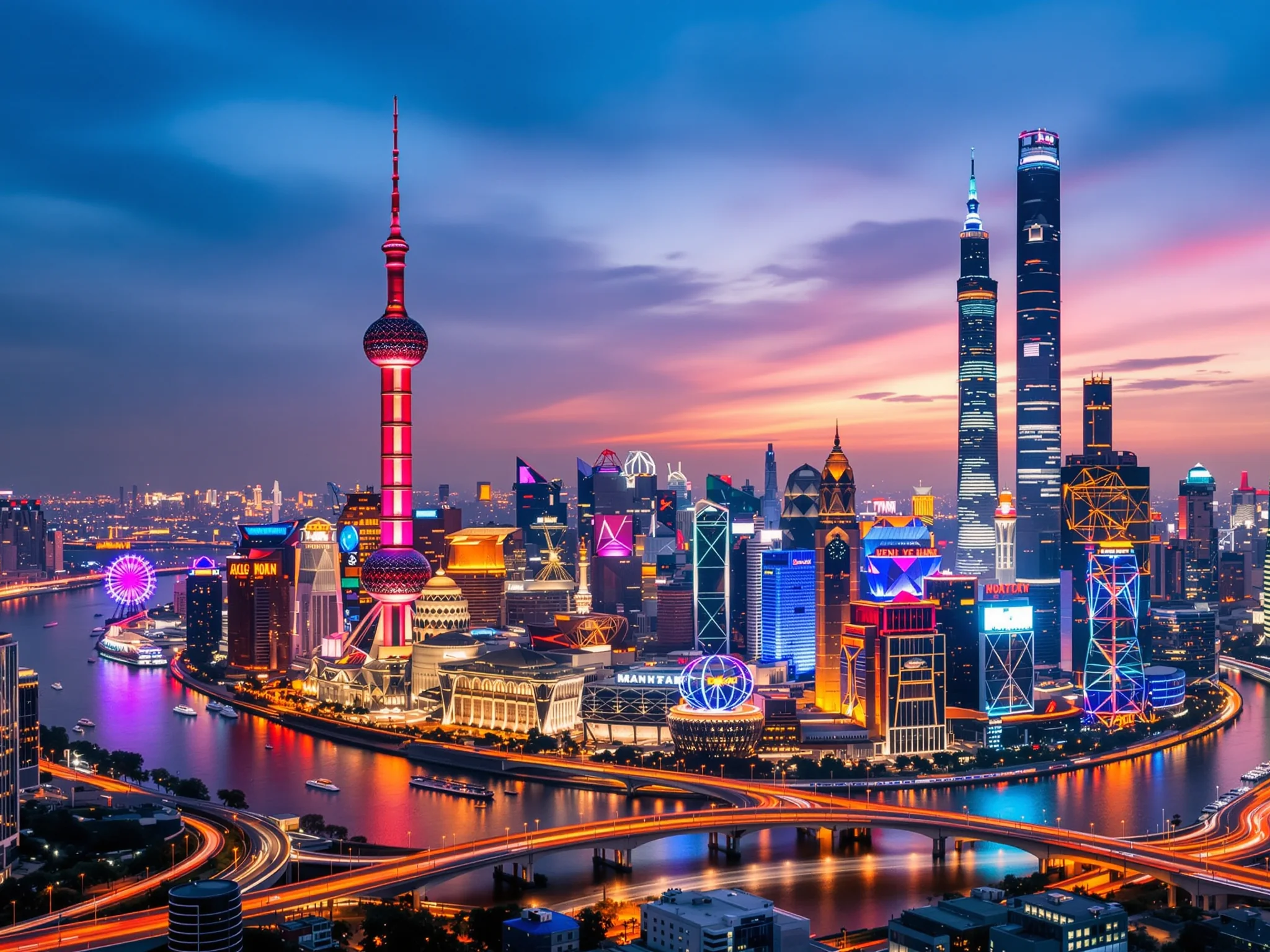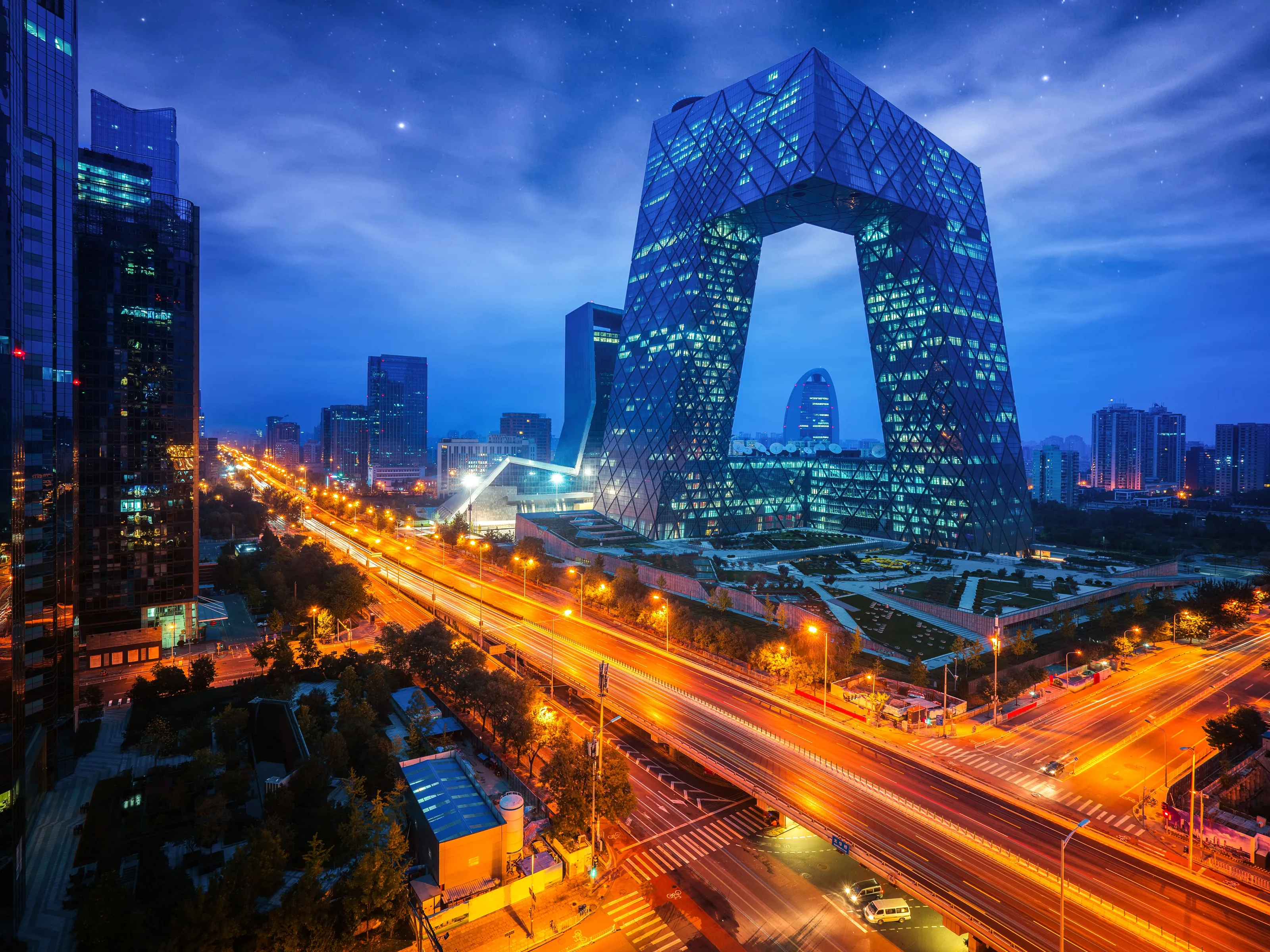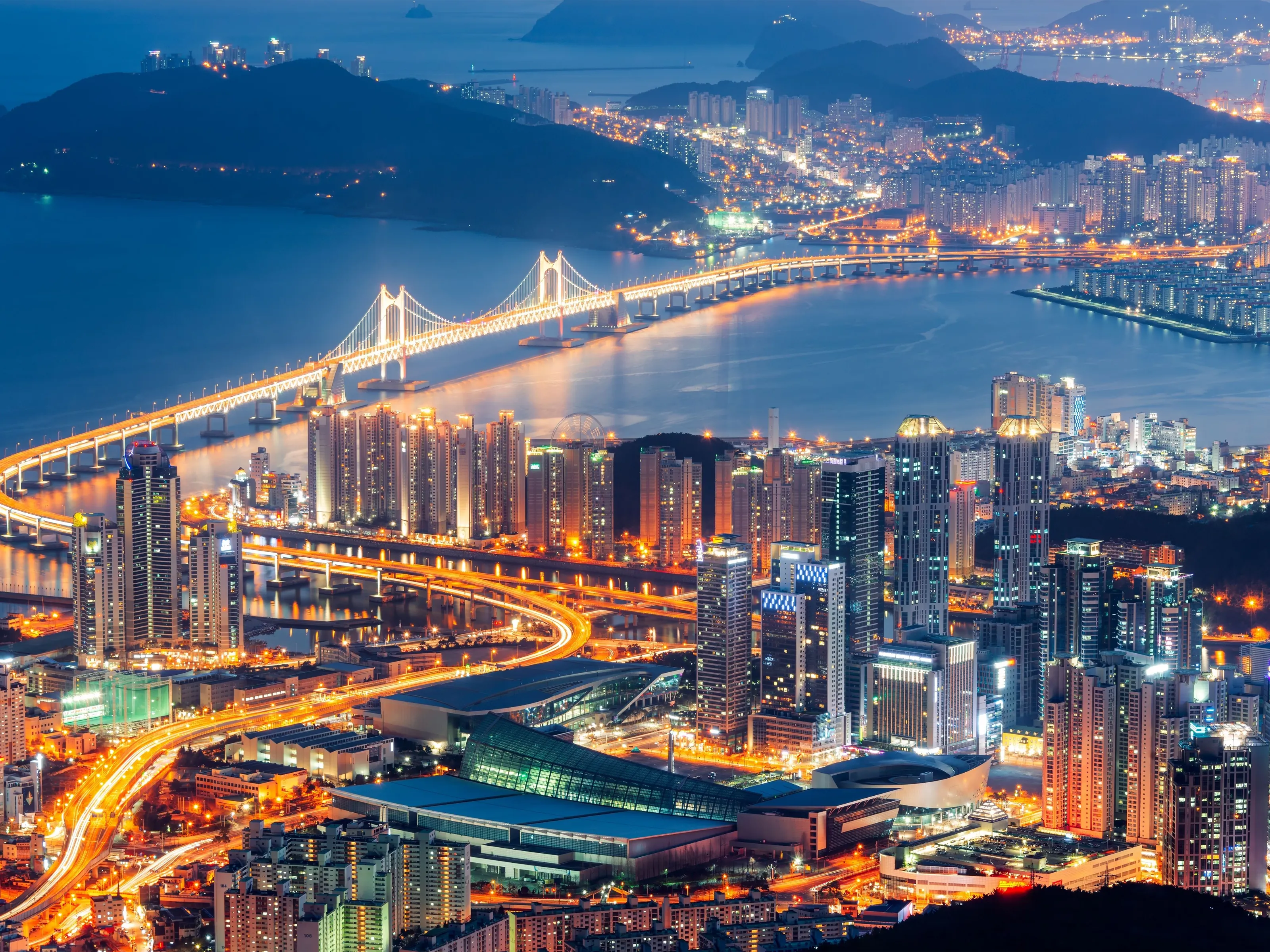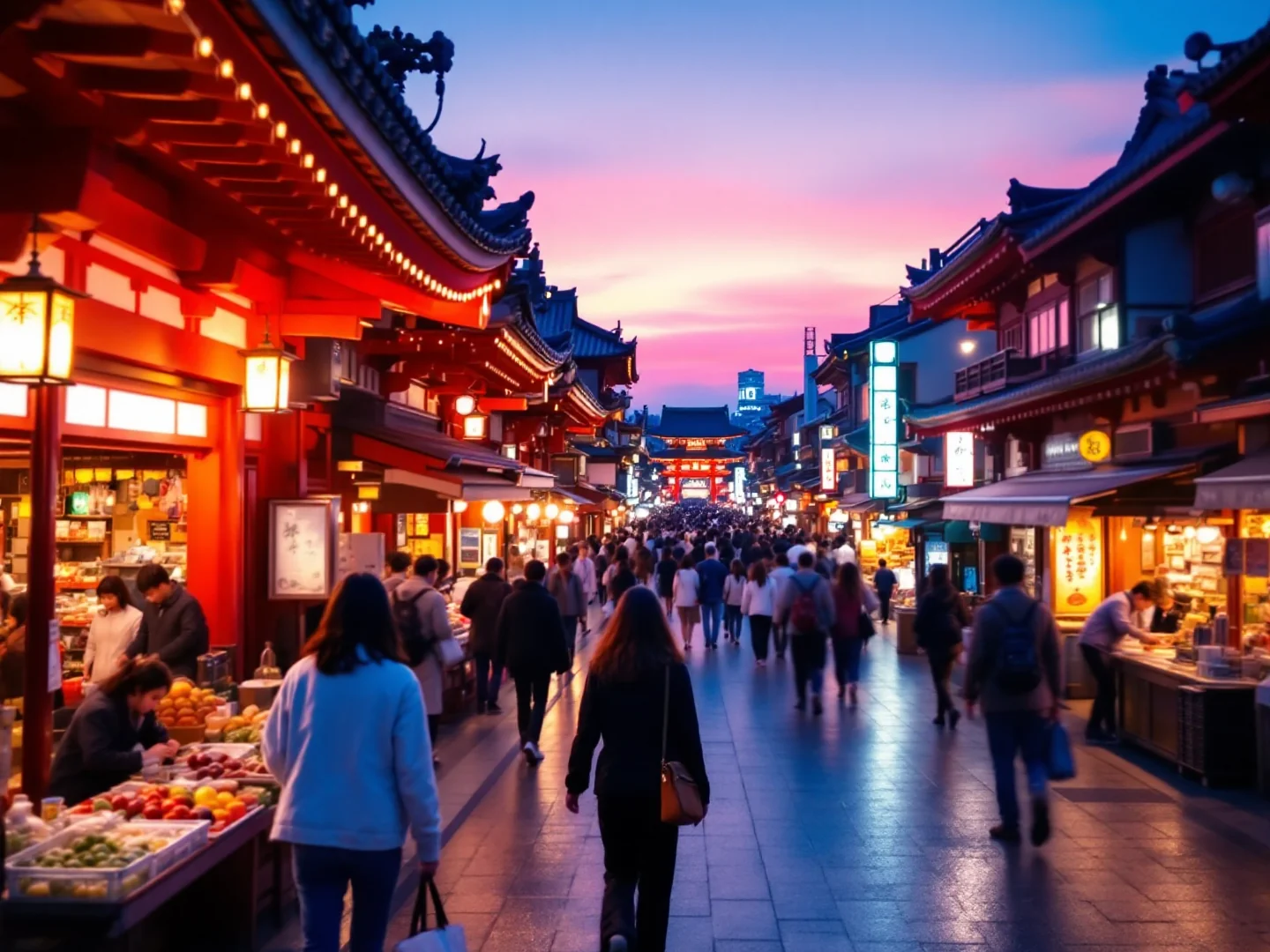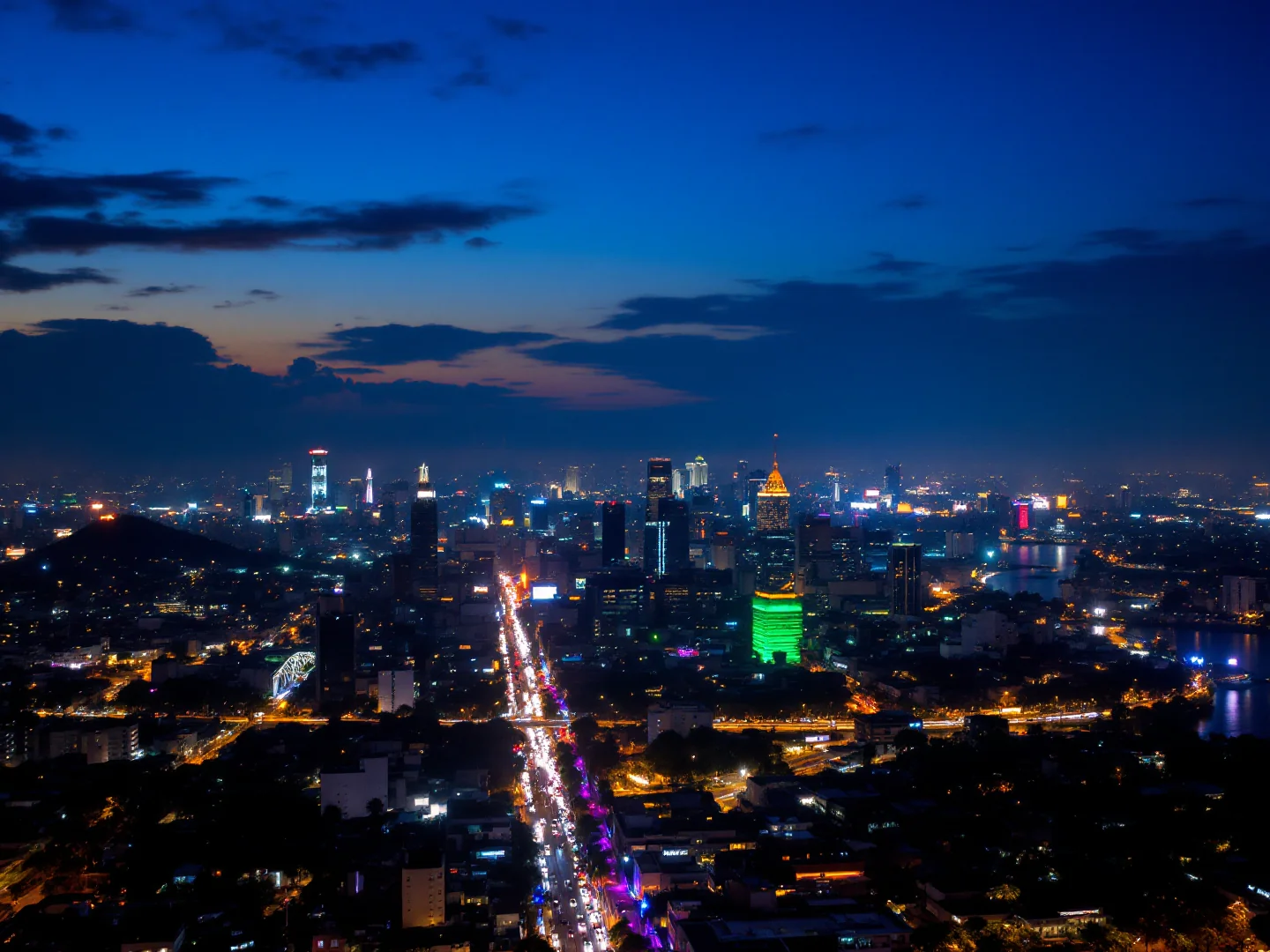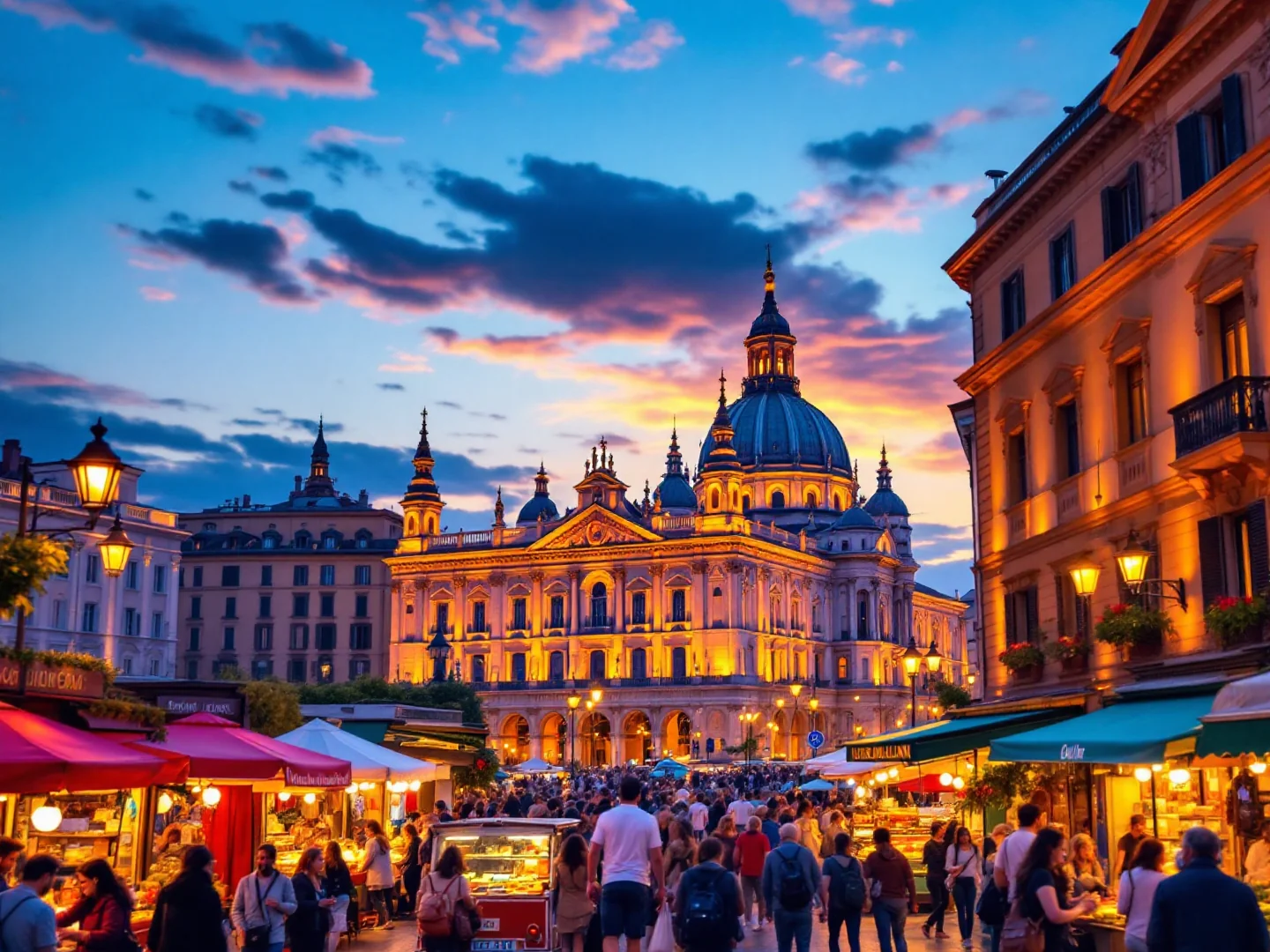Why Visit Seoul?
Seoul electrifies as South Korea's dynamic capital where 5 grand palaces preserve Joseon Dynasty heritage amid a hyper-modern metropolis of K-pop, cutting-edge technology, and 24/7 street food markets. This city of 10 million balances tradition and innovation—Gyeongbokgung Palace's colorful changing of guards ceremony happens beneath skyscrapers, Bukchon's 600-year-old hanok wooden houses share hills with design studios, and Buddhist temples offer meditation programs minutes from Gangnam's luxury shopping district that inspired Psy's viral hit. The food culture obsesses over perfection: Korean BBQ restaurants grill marbled beef tableside, pojangmacha street tents serve soju and tteokbokki until dawn, and Gwangjang Market's endless alleys offer bindaetteok mung bean pancakes and yukhoe raw beef.
K-pop's global phenomenon centers here—BTS fans pilgrimage to Big Hit Entertainment, K-Star Road celebrates idol groups, and Hongdae's clubs showcase tomorrow's trends. Yet Seoul honors history at Changdeokgung's Secret Garden (UNESCO-listed), Jongmyo's royal ancestral shrine, and the DMZ's tense border with North Korea offering sobering half-day tours. Modern Seoul thrives along the Cheonggyecheon Stream's restored waterway, Dongdaemun Design Plaza's Zaha Hadid curves lit by LEDs, and Lotte World Tower's 555-meter height offering vertigo-inducing views.
The jimjilbang bathhouse culture provides 24-hour saunas, sleeping rooms, and relaxation for₩15,000/$11 Visit March-May for cherry blossoms or September-November for autumn foliage. Seoul delivers fast-paced Asian energy, royal heritage, and Korean Wave culture.
What to Do
Palaces & Tradition
Gyeongbokgung Palace
Seoul's largest and most iconic palace, originally built in 1395 and later reconstructed. Standard admission is ₩3,000 for adults, with free entry for under-19s, over-65s and anyone wearing hanbok. Hanbok rentals nearby typically cost around ₩15,000–30,000 for a few hours. The colourful Royal Guard Changing Ceremony happens at Gwanghwamun Gate at 10:00 and 14:00 daily except Tuesdays (when the palace is closed). Go at 9:00 opening or after 15:00 to avoid peak tour groups and leave around two hours to explore the main halls, courtyards and lakeside Gyeonghoeru Pavilion.
Bukchon Hanok Village
A hillside neighbourhood packed with traditional hanok houses, some still used as private homes and others converted into galleries, cultural centres and tearooms. It's free to wander but steep in places. Residents have asked for quiet and respectful behaviour, so avoid shouting, littering or blocking doorways for photos. Go early (around 8–9am) for quieter alleys and clearer views of tiled roofs with modern Seoul in the background. Combine Bukchon with Gyeongbokgung in the morning and Insadong's cafés and craft shops in the afternoon.
Changdeokgung Palace & Secret Garden
UNESCO-listed Changdeokgung is often considered the most harmonious of the Joseon palaces. Palace entry is ₩3,000, but the real highlight is the Huwon (Secret Garden) at the rear. Garden access is by guided tour only; adult tickets are ₩5,000 on top of palace admission, and English tours have limited time slots that should be reserved in advance. The 90-minute garden walk passes ponds, pavilions and centuries-old trees that once formed the royals' private retreat. The palace is usually closed on Mondays, and tours sell out quickly in cherry blossom and autumn foliage seasons.
Modern Seoul
Myeongdong Shopping & Street Food
Seoul's busiest shopping streets for skincare, cosmetics, fashion and K-pop merchandise. In the evening, roads fill with street food stalls selling tteokbokki (spicy rice cakes from around ₩3,000), hotteok pancakes, skewers and more. Expect bright signs, loud promotions and free samples in cosmetic shops. Evenings from 18:00–22:00 are most vibrant but also most crowded. Nearby Namdaemun Market has a more old-school, local feel but with similarly good street food.
N Seoul Tower & Namsan Mountain
Perched on Namsan in central Seoul, N Seoul Tower offers 360° city views. You can hike up via forest trails in 30–45 minutes or take the Namsan cable car (about ₩15,000 round trip for adults). Observatory tickets are around ₩26,000 for adults and ₩20,000 for children and seniors. Go an hour before sunset to watch the city shift from daylight to neon, then stay for the night view. The terrace area with 'love locks' is free to wander; restaurants at the top are pricey, so most people eat before or after.
Dongdaemun Design Plaza (DDP)
Zaha Hadid's flowing, LED-lit Dongdaemun Design Plaza looks like a landed spaceship and is one of Seoul's most photogenic modern buildings, especially after dark. It's free to walk around the complex and lower-level plazas; ticketed exhibitions inside vary from ₩5,000–15,000 depending on the show. Surrounding malls and wholesale complexes trade late into the night, and street-food and fashion stalls pop up along the main roads. Visit at sunset for blue-hour photos, then explore shop floors and markets until past midnight.
Neighborhoods & K-Culture
Gangnam & K-Star Road
Gangnam is all glass towers, offices and high-end shops south of the river. COEX Mall is one of Asia's largest underground malls, with the Instagram-famous Starfield Library (free to enter) and an aquarium. Outside, K-Star Road features bear statues and plaques dedicated to major K-pop groups. Bongeunsa Temple opposite COEX offers a surprisingly peaceful contrast with free entry. Gangnam's nightlife is polished and pricey—come in the evening (19:00–22:00) for restaurants and lounges rather than gritty clubs.
Hongdae (University Area)
Hongdae around Hongik University is youth culture central: buskers, indie clubs, fashion shops and late-night fried chicken joints. Hongdae Playground often has free performances and dance crews in the evenings. Expect lots of noraebang (karaoke) rooms charging roughly ₩10,000–20,000 per hour for a small group. The area really comes alive after 21:00 and can feel almost 24/7 on weekends. If you prefer quieter streets, explore side alleys in the early evening before peak party time.
Insadong & Traditional Crafts
Insadong mixes touristy souvenir shops with genuinely interesting galleries, calligraphy stores and tearooms. Ssamziegil's spiralling ramp is lined with local design and craft stalls, and side alleys hide small hanok-style tea houses where a cup of traditional tea typically costs ₩8,000–15,000. Street snacks like hodugwaja (walnut cakes) and hotteok are easy to grab on the go. On Sundays weather permitting, parts of Insadong-gil are pedestrian-only, with calligraphers and performers in the street.
Gallery
Travel Information
Getting There
- Airports: ICN
Best Time to Visit
April, May, September, October
Climate: Moderate
Weather by Month
| Month | High | Low | Rainy days | Condition |
|---|---|---|---|---|
| January | 5°C | -4°C | 4 | Good |
| February | 6°C | -3°C | 7 | Good |
| March | 12°C | 0°C | 5 | Good |
| April | 16°C | 4°C | 2 | Excellent (best) |
| May | 22°C | 12°C | 10 | Excellent (best) |
| June | 28°C | 18°C | 10 | Good |
| July | 27°C | 20°C | 20 | Wet |
| August | 29°C | 23°C | 21 | Wet |
| September | 24°C | 16°C | 13 | Excellent (best) |
| October | 18°C | 8°C | 3 | Excellent (best) |
| November | 11°C | 2°C | 6 | Good |
| December | 3°C | -6°C | 1 | Good |
Weather data: Open-Meteo Archive (2020-2024) • Open-Meteo.com (CC BY 4.0) • Historical avg. 2020–2024
Budget
Excludes flights
Visa Requirements
Visa-free for EU citizens
💡 🌍 Traveler Tip (November 2025): Best time to visit: April, May, September, October.
Practical Information
Getting There
Incheon International Airport (ICN) is 49km west—consistently rated world's best. Airport Railroad Express (AREX) to Seoul Station costs ₩9,500/$7 (51 min). Limousine buses to hotels ₩16,000/$12 Taxis ₩60,000-80,000/$44–$59 Domestic Gimpo Airport serves regional flights. KTX trains connect Busan (2h30min), other cities.
Getting Around
Seoul Metro (23 lines!) is world-class, cheap, and extensive. T-Money card essential (₩5,000 deposit+credit, tap on/off, works at convenience stores). Single subway rides are ₩1,550-2,500 with T-money depending on distance. Buses supplement (₩1,550). Walking is rewarding. Taxis are still relatively cheap and metered, with base fares around ₩4,800 (late-night surcharge). Uber-style: Kakao T app. Avoid rental cars—traffic is dense.
Money & Payments
South Korean Won (₩, KRW). Exchange $1 ≈ ₩$1,450–$1,4701 ≈ ₩1,350-1,380. Cards accepted almost everywhere, even street vendors increasingly. ATMs widespread (convenience stores). Tipping is not customary and can offend—service is included.
Language
Korean is official. English signage in metro and tourist areas. Younger Koreans (under 30) speak decent English. Older generations speak limited English. Download Papago translator app. Learning hangul alphabet helps read signs. Pointing at pictures works in restaurants.
Cultural Tips
Remove shoes when entering homes, hanok guesthouses, and some restaurants (look for shoe racks). Bow slightly when greeting elders. Use two hands when receiving/giving to elders. Don't tip—it's offensive. Koreans eat fast—meals are efficient. Soju drinking culture: pour for others, never yourself. Book restaurants ahead on weekends. Many businesses close on Sundays. Respect DMZ rules strictly. Konglish (Korean-English) is common. Kimchi comes free with every meal.
Perfect 3-Day Seoul Itinerary
Day 1: Palaces & Tradition
Day 2: Modern Seoul
Day 3: DMZ or Markets
Where to Stay in Seoul
Myeongdong
Best for: Shopping, street food, cosmetics, tourist hub, central location
Gangnam
Best for: Luxury shopping, K-pop, modern Seoul, business district, upscale
Hongdae
Best for: University area, nightlife, indie music, clubs, street performances, young
Insadong
Best for: Traditional crafts, tea houses, galleries, antiques, cultural, tourist-friendly
Frequently Asked Questions
Do I need a visa to visit Seoul?
What is the best time to visit Seoul?
How much does a trip to Seoul cost per day?
Is Seoul safe for tourists?
What are the must-see attractions in Seoul?
Popular Activities
Top-rated tours and experiences in Seoul
Ready to Visit Seoul?
Book your flights, accommodation, and activities

